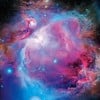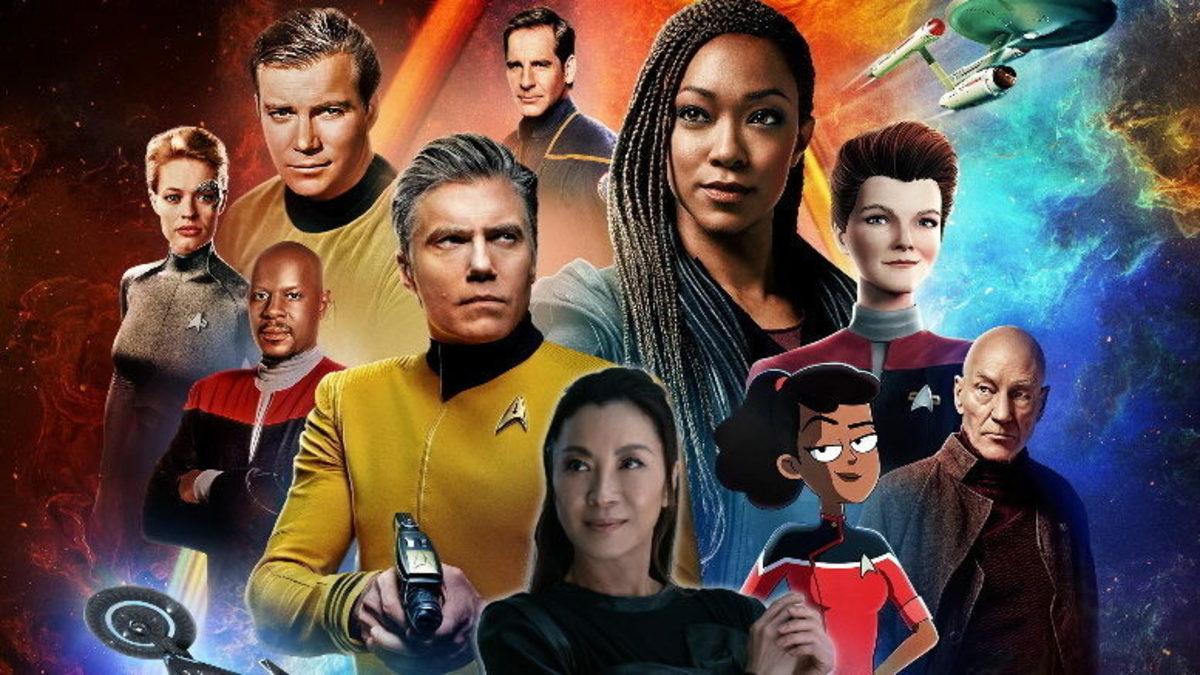- HubPages»
- Books, Literature, and Writing»
- Books & Novels»
- Fiction»
- Science Fiction & Fantasy Books
Star Trek: The Star To Every Wandering: Thoughts and Analysis on Temporal Physics and Parallels
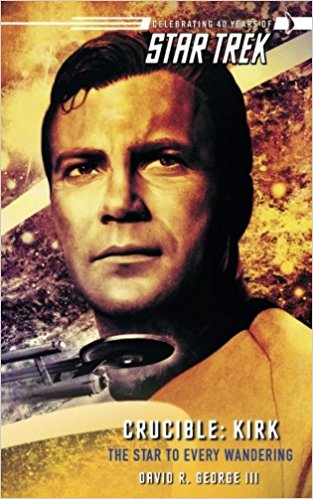
I frequently find that books I enjoy have a low-presence in online discussion groups for various reasons. Many places do exist but they usually fade out fast and don’t generate deeper debate on the novel in question. Instead, many reviewers are out there that don’t always analyze and investigate the aspects I notice. It is my intention to act like a review and an analysis of key portions of The Star to Every Wandering in the hopes of inspiring new thoughts into this 40th anniversary celebration of Star Trek and perhaps give you new insight into this novel. Will it wander around? Probably. It will also contain portions I loved and hated as I try to weave together some coherent thoughts on The Star to Every Wandering. Plus this is a Kirk story, so portions of him that are relevant in the other Crucible Trilogy novels will be brought here.
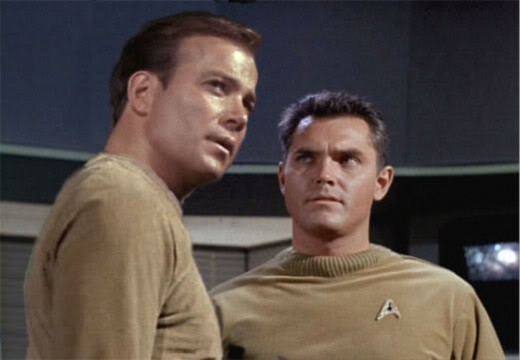
Parallels and Echoes
One of my first thoughts reading this book was the parallel it establishes between Kirk and Pike, where both ended their lives in an illusionary reality and also with deep pain over an incredible loss. Kirk’s was a loved one while Pike’s was a physical freedom, but Pike ended his life with the Talosians and Kirk with the Nexus. Both are illusions of what we consider reality. Is this meant to be the fate of Kirk? Doesn’t he deserve a rest or should he be committed to a life of saving others but never feeling like he himself is redeemed, which he could get in the Nexus? DRGIII makes sure Kirk gets a better deal than either of these as we find out in the book’s conclusion.
But that was not the only interesting parallel with Pike in the book. The Mojave Desert is once again used as a confrontation between reality and fantasy, just like in “The Cage.” In this case, Kirk confronts Kirk Echo in a stand for ensuring the converging temporal loop (more on this soon) is prevented. Here, we really dig into how the temptation of the Nexus caused his Echo to appear after Kirk left it. But that makes one wonder…does everyone entering the Nexus gain an echo each time they leave? Kirk ends up working with the Picard Echo briefly and we know about the Guinan one from “Generations”, so could an army of Echoes be released some day? Hmm…
This brings me to my next point of discussion. What is the deal with the Echoes of the Nexus? Like many plot points of that realm, they are arbitrary and seem to fit the story’s needs rather than follow a reasonable and consistent set of rules. Guinan implied that an Echo couldn’t leave the Nexus if their counterpart was already outside the Nexus. Yet that is exactly what Kirk does in this book, but to be fair only he could actually perform his plan of stopping the converging temporal loop and so he couldn’t ask a different Echo to leave. Maybe Guinan stated that one couldn’t leave because she was afraid of creating a converging temporal loop? But two Kirks were present in 2293, one an Echo and the other the “original”, and presumably that Echo was not in possession of the same (any?) M’Benga numbers mentioned in Provenance of Shadows and thus eliminated the converging temporal loop, so what stopped Guinan? Something isn’t consistent here or I am missing a detail.
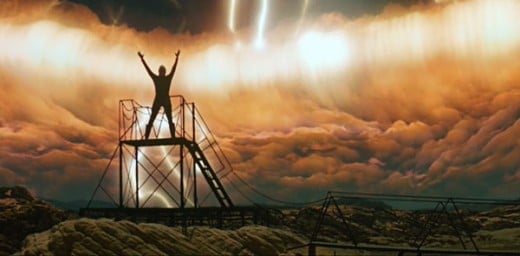
Physics of the Nexus and Time Travel
Who found the physics behind the converging temporal loop? If you said DRGIII then you pay attention to reality. For those that are future bound, it was Spock, after his successful Kolinahr in The Fire and the Rose. Keep in mind that the physics for this are not even remotely known, but go with it people because its science fiction! If two sets of chronitons and chronometric particles were to exist in an identical space-time, then instead of an infinite amount of energy at a single point (as the equations Spock found seemed to imply implied), the sets of particles would meet each other and the energy dispersed via the destruction of everything between them via some method of connection (of which Spock feels is an unlikely event but as we see happens). This seems to be a huge metaphor for life events of the past coming back to wreak havoc on the present, and we usually have to find some way to disconnect or cope if we want to function. Through the actions of this book, Kirk is able to accomplish a disconnect of sorts but in a more literal way. However, I think it helps him cope for sure and possibly move on from the traumatic event, but like many instances in life they can come back in an explosive manner.
Now, the plot of this book has two basic goals for Kirk: preserve the timeline and prevent the converging temporal loop. But did the timeline really stay the same as he did this? I argue it couldn’t have, for Kirk Echo took actions that were never done in the original past. He reactivated his commission early to get aboard the Enterprise-B, he was likely spotted by public surveillance equipment, and he interacted with Enterprise B crewmembers (especially the “non-essential” bridge personnel). That being said, the Echo did take many steps to try and preserve as best as possible, such as replacing objects and moving at low-traffic chances, and also noting shuttlecraft missing and places of damage to the B in an attempt to take something that wouldn’t be noticed. So, it’s possible, but not probable.
But it gets worse as the ending of this book unfortunately presents problems with believability (I know, sounds weird for a science fiction novel). In the span of 10 pages DRGIII manages to get sloppy and rush things without digging deeper, and I know for regular readers of his work that will sound ridiculous. But would Picard really work with someone claiming to be Kirk without having that Nexus experience, something this Picard never had in Kirk 2’s new timeline? Could he just accept a time traveler from out of nowhere? And because of all that, why did Kirk 2 need to say exactly the same dialogue Kirk 1 used? They wouldn’t have the same context as in the past and were not required to preserve the timeline. But it gets worse, for those of us versed in temporal mechanics will shout about Kirk 1. He now has never entered the Nexus after the actions of Kirk 2 so how could Kirk 1 enter the Nexus and allow the Echo to exist to start the change, much less end up back at the Guardian of Forever? Despite how awesome it would be for Kirk to be still hopping around the galaxy and free of responsibility, it remains a large plot hole. Maybe this was all just a dream before death arrived…
The Possible Order of Events
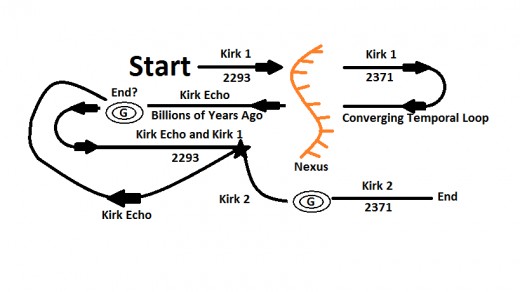
Favorite Moment
One of the highlights of the book was the moments before Kirk 2 goes into the Guardian to help Picard out. Kirk 2 has just finished watching Picard’s life and is about to ask the Guardian to play again to enable the jump to 2371 but then asks to see the lives of many people close to him like his parents, Spock, Bones, Antonia, and so on. He sees their entire lives. He knows about Bones' marriage and fulfillment and that Spock would ultimately die in an alternate timeline. Imagine knowing you were essentially saying goodbye to your closest friends and family members and were given a chance to see their full lives including their deaths? Would you want to? But then he finishes with the life of Edith, something he avoided to dwell on up until the end was near for him. This final embrace is him acknowledging that when he goes to help Picard he will likely die, just like the Echo conveyed to him, and so he wants to spend some of his last moments by seeing those moments with Edith that Kirk considered perfection. And Kirk did all of this for himself, a rare moment for the man who sacrificed so much over the years we have gotten to known him.
© 2017 Leonard Kelley
